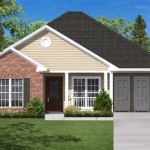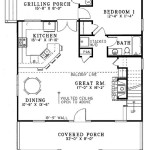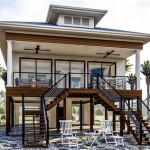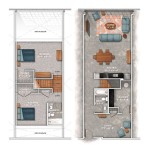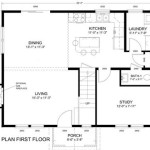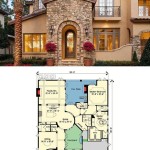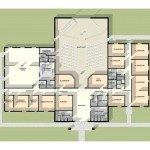House Plans with Closed Kitchens: A Comprehensive Guide
In the realm of home design, the kitchen plays a pivotal role, serving as the heart of the house where culinary delights are prepared and cherished memories are made. While open-concept kitchens have gained immense popularity in recent years, closed kitchens continue to hold their own, offering a unique blend of practicality and elegance. This article delves into the world of house plans with closed kitchens, exploring their advantages, disadvantages, and key considerations for homebuyers.
Advantages of Closed Kitchens
Closed kitchens, characterized by distinct walls separating them from adjacent living spaces, offer a multitude of benefits that appeal to diverse homeowners. One of the most prominent advantages is enhanced noise control. With the kitchen enclosed, the clatter of dishes, the whirring of appliances, and the general hustle and bustle of cooking are effectively contained, creating a more peaceful and serene atmosphere in the rest of the home. This is particularly beneficial for families with young children, where noise levels can often be a source of frustration.
Another key advantage of closed kitchens is improved odor control. The distinct walls act as a barrier, preventing cooking smells from permeating the rest of the house. This is crucial for homeowners who enjoy preparing meals with strong aromas, such as fish or curry, without worrying about lingering odors. Moreover, closed kitchens provide a more private and intimate space for cooking and dining, allowing homeowners to enjoy their culinary endeavors without distractions. It creates a dedicated zone for food preparation and serves as a sanctuary for those who find solace in the act of cooking.
Disadvantages of Closed Kitchens
While closed kitchens offer a range of advantages, they also come with certain disadvantages that homeowners should consider. One of the most prominent drawbacks is the potential for a feeling of isolation. The physical barrier between the kitchen and other living spaces can create a sense of separation and disconnect, diminishing the flow of traffic and interaction between family members. This can be particularly challenging for homeowners who enjoy socializing and entertaining guests.
Another disadvantage of closed kitchens is reduced natural light. With walls blocking the path of sunlight, it can be challenging to maintain a bright and airy atmosphere within the kitchen, potentially leading to a darker and more claustrophobic feel. This is especially relevant for kitchens that lack windows or are located in areas with limited natural light. Furthermore, closed kitchens can limit the use of space, particularly in smaller homes. The dedicated space for the kitchen can reduce the overall square footage available for other living areas, potentially impacting the overall layout and functionality of the house.
Design Considerations for Closed Kitchens
If you decide to opt for a closed kitchen design, careful consideration must be given to various design elements to maximize functionality and aesthetic appeal. One crucial aspect is the layout. A well-designed layout ensures that the kitchen is both efficient and user-friendly. Common layouts for closed kitchens include U-shaped, L-shaped, and galley kitchens, each offering its unique benefits and drawbacks.
Another critical consideration is ventilation. With the kitchen enclosed, proper ventilation is essential to prevent the accumulation of steam, smoke, and cooking odors. This can be achieved through the installation of powerful exhaust fans, strategically placed windows, or both. Equally important is the selection of suitable flooring materials. Durable, easy-to-clean materials, such as tile, laminate, or vinyl, are ideal for closed kitchens, as they can withstand spills and heavy traffic.
In conclusion, house plans with closed kitchens offer a unique blend of advantages and disadvantages. By carefully considering the pros and cons, as well as the available space and personal preferences, homeowners can make informed decisions regarding the optimal kitchen design for their needs. Whether you prioritize peace and quiet, efficient odor control, or a dedicated space for culinary creativity, a closed kitchen can be an excellent choice.

Traditional Homes With Closed Floor Plans Blog Eplans Com

Traditional Homes With Closed Floor Plans Blog Eplans Com

Traditional Homes With Closed Floor Plans Blog Eplans Com

We Re Making A Case For The Not So Open Floor Plans

Traditional Homes With Closed Floor Plans Blog Eplans Com

Traditional Homes With Closed Floor Plans Blog Eplans Com

Traditional Homes With Closed Floor Plans Blog Eplans Com

34 Best Closed Concept Plans Ideas House Floor

34 Best Closed Concept Plans Ideas House Floor
:max_bytes(150000):strip_icc()/__opt__aboutcom__coeus__resources__content_migration__treehugger__images__2017__02__plan-messy-6f18e692861642f4b1b17f419a462e42.jpg?strip=all)
The Case For Closed Kitchen

